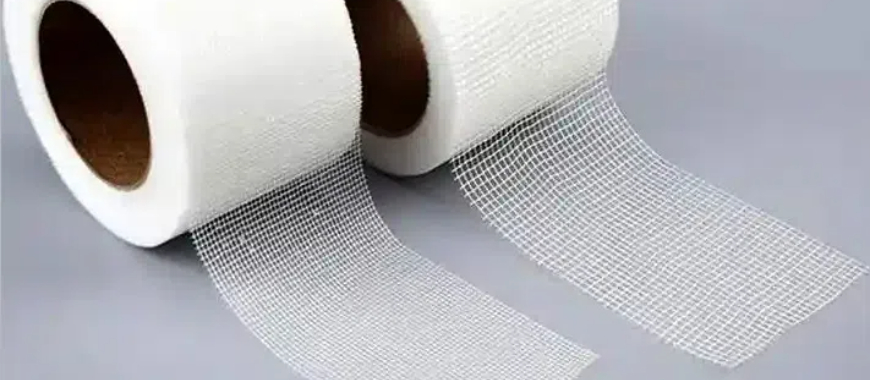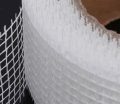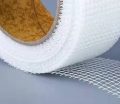
Fiberglass rods are widely used in various industries due to their strength, durability, and lightweight nature. These versatile materials are ideal for applications requiring structural support and insulation. However, understanding the fiberglass rod heat limit is crucial to ensure their effectiveness in high-temperature environments. Heat tolerance varies based on the resin and fiberglass composition, making it essential to evaluate specific requirements before use. When exposed to excessive heat, fiberglass rods may lose structural integrity, affecting performance and safety. For applications involving extreme temperatures, proper insulation or specialized heat-resistant resins can be employed. This knowledge helps maximize the rods’ lifespan and reliability across industrial, construction, and recreational settings. Learning about the fiberglass rod heat limit ensures safe and efficient usage in demanding conditions.
Fiberglass Rod Heat Limit
Understanding the fiberglass rod heat limit is essential for selecting the right material for high-temperature applications. Fiberglass rods are highly versatile, but their performance can be influenced by their thermal tolerance. Let’s explore their general temperature resistance and resin-based differences.
General Temperature Resistance
Typical Heat Limits of Fiberglass Rods
Fiberglass rods can typically withstand temperatures between 150°F and 200°F, depending on the specific composition. Standard fiberglass may begin to lose structural integrity when temperatures exceed this range. High-performance variants can tolerate higher temperatures, making them suitable for industrial or specialized applications. The fiberglass rod heat limit ensures the material remains stable under different conditions.
Extreme temperatures can soften the resin matrix, leading to deformation or reduced strength. For applications in high-heat environments, selecting materials with enhanced temperature resistance is crucial. This choice ensures that the rods perform reliably without compromising structural integrity.
Fiberglass Resin Temperature Tolerance
Heat Resistance of Common Fiberglass Resins
Fiberglass rods rely on the resin matrix for their thermal stability. Most standard polyester resins have a fiberglass rod heat limit of 150°F to 200°F, while epoxy resins can withstand up to 250°F or higher. Specialized resins, like phenolic or high-temperature epoxy, push these limits even further, making them ideal for demanding applications.
Epoxy resins are often chosen for their superior heat resistance and mechanical properties. This makes them a preferred option for aerospace and industrial uses. However, their higher cost may be a disadvantage for budget-sensitive projects. Polyester resins, though affordable, may not offer the same high-heat tolerance.
Fiberglass Rod Heat Limit: Enhancing Heat Resistance in Fiberglass Rods
To ensure optimal performance in high-temperature environments, it is essential to enhance the fiberglass rod heat limit. This can be achieved through the use of heat-resistant resins and additional insulation methods. Understanding these approaches is key to maximizing the utility and durability of fiberglass rods.
Heat-Resistant Fiberglass Resins
Key Characteristics of Heat-Resistant Fiberglass Resins
Heat-resistant resins play a critical role in determining the fiberglass rod heat limit. These resins are specially formulated to withstand higher temperatures without compromising structural integrity. Epoxy resins, for instance, are known for their excellent thermal stability, often tolerating temperatures up to 250°F or more. Phenolic resins, on the other hand, are favored for their fire-resistant properties, making them suitable for extreme applications.
Heat-resistant resins not only increase temperature tolerance but also enhance resistance to deformation, cracking, and material breakdown under prolonged heat exposure. These properties make them indispensable in industries requiring reliable performance in demanding conditions.
Applications Where Heat-Resistant Resins Are Essential
Applications requiring a high fiberglass rod heat limit include aerospace, automotive, and industrial sectors. For example, in aerospace, fiberglass rods reinforced with heat-resistant resins are used in structural components exposed to engine heat. Similarly, industrial settings rely on these rods for insulation and reinforcement in high-temperature environments. By selecting the right resin, users can ensure safety, efficiency, and long-term reliability.
As part of GangLong Fiberglass, we focus on developing materials with advanced resin formulations tailored to meet high-temperature requirements. This ensures our fiberglass rods perform exceptionally across a wide range of challenging applications.
Insulating Fiberglass Against Heat
Methods for Insulating Fiberglass Rods to Improve Heat Tolerance
Insulation is a practical method to increase the fiberglass rod heat limit, protecting rods from direct heat exposure. Common methods include wrapping fiberglass rods with high-temperature tapes or using thermal barriers. These layers serve as a shield, reducing the impact of heat on the rod’s structure.
In addition to physical barriers, thermal insulation coatings are often applied to fiberglass rods. These coatings are designed to reflect heat and provide additional protection against extreme conditions. Proper insulation not only enhances the material’s heat tolerance but also extends its lifespan in demanding environments.
Use of Heat Shields and Thermal Coatings
Heat shields are another effective solution for increasing the fiberglass rod heat limit. These shields are typically made from materials with excellent thermal conductivity and are placed between the heat source and the fiberglass rod. By redirecting or dissipating heat, they prevent the rods from overheating.
Thermal coatings further enhance heat resistance by creating an additional layer of protection. For instance, ceramic-based coatings are often used to improve heat dissipation. These methods ensure that fiberglass rods remain structurally sound, even in environments where temperatures are exceptionally high.
At GangLong Fiberglass, we specialize in offering innovative insulation solutions for fiberglass rods. Our focus is on delivering customized products that meet the most rigorous thermal requirements while maintaining durability and efficiency.
Top Uses for Durable Fiberglass Rod Markers Today
Fiberglass Rod Heat Limit: Manipulating Fiberglass with Heat
Manipulating fiberglass with heat can expand its applications, but understanding the fiberglass rod heat limit is crucial to avoid damage. Whether bending fiberglass rods or reshaping bumpers, careful techniques and precautions are essential.
Bending Fiberglass Rods
Feasibility and Risks of Bending Fiberglass Rods with Heat
Fiberglass rods can be bent using heat, but exceeding the fiberglass rod heat limit can lead to structural failure. When heated appropriately, fiberglass becomes more pliable, allowing it to be reshaped without breaking. However, overexposure to heat can weaken the resin matrix, causing cracks, deformation, or even delamination.
The feasibility of bending fiberglass depends on the rod’s composition and intended use. For example, rods reinforced with heat-resistant resins offer greater flexibility under heat. However, standard fiberglass rods may not tolerate high temperatures well, limiting their ability to bend without compromising strength.
It is essential to consider the risks of improper heat application. Uneven heating or excessive force can cause localized damage, rendering the rod unsuitable for its intended application. Users should evaluate the specific fiberglass rod heat limit to determine if bending is a viable option.
Techniques for Safely Bending Fiberglass Rods
Safe bending requires controlled heating and even application of force. Heat guns or infrared heaters are commonly used to provide consistent warmth without exceeding the fiberglass rod heat limit. Gradual heating ensures the resin softens evenly, reducing the likelihood of damage.
Once pliable, the rod can be gently shaped using molds or guides to achieve the desired curve. Allowing the rod to cool naturally after bending helps maintain its new shape while preserving structural integrity. At GangLong Fiberglass, we emphasize safe handling practices to ensure the durability and functionality of our products during reshaping processes.
How to Bend a Fiberglass Bumper
Reshaping fiberglass bumpers requires precision to stay within the fiberglass rod heat limit while achieving desired results. Begin by cleaning the bumper to remove any dirt or debris, as contaminants can interfere with the heating process. Use a heat gun to gradually warm the area to be reshaped, ensuring even distribution of heat.
As the fiberglass becomes pliable, apply gentle pressure to adjust the shape. For complex adjustments, using a mold or frame can help guide the reshaping process. Once the desired shape is achieved, hold the bumper in place until it cools and solidifies. Avoid rapid cooling, as it can cause stress cracks or uneven hardening.
Precautions to Avoid Damaging Fiberglass Structures
Reshaping fiberglass structures requires adherence to safety measures to prevent damage. Never heat fiberglass beyond the fiberglass rod mechanical properties limit, as this can compromise its strength, flexibility, and overall durability. Exceeding this limit may lead to weakening of the material, making it more prone to cracking or failure. Additionally, avoid using open flames or excessive heat sources, as they may cause localized burning or structural weakening.
Always inspect the reshaped fiberglass for signs of cracking or delamination. If issues are detected, reinforcing the affected areas with resin or additional fiberglass layers may be necessary. At GangLong Fiberglass, we prioritize quality and safety, offering materials and guidance that support successful reshaping while maintaining structural integrity.
Best Fiberglass Rod Material for Durable Applications
Practical Considerations for High-Heat Environments
Working in high-temperature environments demands careful consideration of the fiberglass rod heat limit. Proper material selection and insulation strategies are crucial to ensure safety, performance, and durability.
Curved Fiberglass Rods in High-Temperature Applications
Advantages of Pre-Curved Fiberglass Rods
Pre-curved fiberglass rods offer significant benefits in applications requiring customized shapes under high heat. These rods eliminate the need for on-site bending, reducing risks of exceeding the fiberglass rod heat limit during installation. Their precision-crafted curves provide consistent performance while maintaining structural integrity.
Pre-curved rods are particularly advantageous in industries such as construction, aerospace, and marine sectors. Their consistent quality ensures that the material retains its mechanical properties even in extreme conditions. Additionally, pre-curved rods reduce the risk of uneven stress distribution, which can occur when manually shaping rods.
At GangLong Fiberglass, we design pre-curved fiberglass rods tailored to meet specific high-temperature requirements. This approach ensures enhanced durability, superior performance, and reduced labor costs during installation.
Selecting the Right Material for Curved Designs
Material selection plays a critical role in ensuring curved fiberglass rods perform effectively under high heat. Choosing resins and fibers that align with the fiberglass rod heat limit is essential. Heat-resistant resins, such as epoxy or phenolic, can withstand prolonged exposure to elevated temperatures without degrading.
Before selecting a material, it is important to assess the application’s specific requirements. For example, aerospace designs may prioritize lightweight materials, while industrial settings may require higher chemical resistance. Understanding these needs ensures optimal material performance and long-term reliability.
Fiberglass Heat Insulation for Industrial Use
Importance of Heat Insulation for Durability and Safety
Heat insulation enhances the fiberglass rod heat limit, ensuring durability and safety in high-temperature environments. Without proper insulation, fiberglass rods risk degradation, which can compromise structural performance and increase safety hazards.
Insulation minimizes heat transfer, preserving the rod’s mechanical properties while extending its lifespan. In industrial applications, where temperatures often exceed safe limits, proper insulation protects both the material and surrounding components. This ensures operational efficiency and reduces maintenance requirements.
At GangLong Fiberglass, we provide customized insulation solutions to enhance fiberglass rod performance. These solutions are tailored to withstand specific thermal conditions, ensuring safety and reliability in critical applications.
Examples of Industrial Applications Requiring Heat-Resistant Fiberglass
Heat-resistant fiberglass rods and insulation are widely used in industrial applications. For instance, power plants utilize insulated rods to maintain electrical integrity under high heat. Similarly, chemical processing facilities rely on heat-resistant fiberglass for pipe supports and structural reinforcements.
In the aerospace industry, insulated fiberglass rods contribute to thermal stability in aircraft components exposed to engine heat. These examples highlight the versatility of heat-resistant fiberglass in maintaining performance across diverse applications.
Our team at GangLong Fiberglass specializes in creating solutions that meet these industrial demands. By combining high-quality materials with advanced insulation techniques, we ensure our fiberglass rods exceed the expectations of high-heat environments.
Final Thoughts on Fiberglass Rod Heat Limit
Understanding the fiberglass rod heat limit is essential for maximizing performance in high-temperature environments. Proper knowledge and preparation help ensure safety, durability, and efficiency in various applications.
Recap of Heat Tolerance in Fiberglass Rods and Resins
The fiberglass rod heat limit is influenced by the material composition, including the type of resin and fiberglass used. Standard fiberglass rods typically withstand temperatures between 150°F and 200°F, while heat-resistant variants can endure significantly higher ranges. Resins such as epoxy or phenolic offer enhanced thermal stability, making them suitable for demanding applications.
Understanding these limits allows users to select materials that align with the specific requirements of their projects. Overexposure to heat without proper preparation can lead to structural weakening or failure, emphasizing the importance of heat tolerance in design and use.
At GangLong Fiberglass, we provide tailored solutions to address these challenges, ensuring our materials meet the highest performance standards.
Final Tips for Choosing and Using Fiberglass Rods in High-Temperature Scenarios
Choosing the right fiberglass rod begins with evaluating the operating environment. Consider factors like expected temperature exposure, duration of heat, and the rod’s mechanical requirements. Heat-resistant resins and pre-insulated designs should be prioritized for extreme conditions.
When using fiberglass rods, proper insulation or external coatings can help maintain the fiberglass rod heat limit. Regular inspections and maintenance are also critical to detect any signs of heat-related degradation. Adhering to these practices ensures the rods perform effectively over time.
Our team at GangLong Fiberglass offers expert guidance on material selection and application, helping clients achieve optimal results in their projects.
Encouragement to Explore Customized Solutions
High-temperature environments often require customized materials to meet unique demands. Customized solutions ensure the fiberglass rod heat limit matches the specific requirements of the application. This approach minimizes risks, enhances durability, and maximizes efficiency.
At GangLong Fiberglass, we specialize in creating customized fiberglass rods and resins tailored for high-heat scenarios. Some of these rods share properties with fiberglass cable pulling rods, designed for strength and flexibility in demanding conditions. By leveraging advanced materials and innovative designs, we help clients achieve superior performance and safety in challenging environments.
Whether for industrial, aerospace, or marine applications, our focus remains on delivering reliable and heat-resistant solutions. Explore the potential of customized fiberglass products to meet your most demanding requirements and achieve long-term success.
FAQs about Fiberglass Rod Heat Limit
Fiberglass can typically withstand temperatures ranging from 150°F to 200°F, depending on the resin and fiber composition. High-temperature fiberglass products, such as those reinforced with heat-resistant epoxy resins, can endure temperatures up to 250°F or higher. Specialized fiberglass materials designed for extreme environments can handle even greater heat levels, making them suitable for industrial and aerospace applications. However, exceeding the fiberglass rod heat limit can lead to structural weakening or loss of mechanical properties. To ensure optimal performance, it is essential to select fiberglass rods that match the specific temperature requirements of your application.
Fiberglass itself does not “melt” in the traditional sense, as it is a composite material. The glass fibers within fiberglass have a melting point between 1000°F and 1400°F, depending on the type of glass used. However, the resin matrix binding the fibers can soften or degrade at much lower temperatures, typically between 150°F and 250°F. This softening defines the fiberglass rod heat limit in most applications. Prolonged exposure to temperatures beyond this range can compromise the material’s integrity, causing deformation or delamination. Using heat-resistant resins and proper insulation can help protect fiberglass rods in high-temperature conditions.
Fiberglass can crack in heat if exposed to temperatures exceeding its heat limit or subjected to rapid temperature changes. The resin component of fiberglass is particularly vulnerable to heat-induced stress, which may lead to cracking or delamination. Cracks often start small but can expand over time, compromising the rod’s structural integrity. While high-quality fiberglass products are designed to resist moderate heat exposure, proper precautions must be taken in extreme environments. Ensuring that the fiberglass rod heat limit is not exceeded and using heat-resistant coatings or insulation can significantly reduce the risk of cracking.
Yes, fiberglass is affected by heat, particularly the resin matrix that binds the glass fibers. When exposed to high temperatures, the resin can soften, lose strength, or degrade, affecting the overall performance of the material. Excessive heat may also weaken the bond between fibers, leading to reduced structural stability. However, fiberglass rods reinforced with heat-resistant resins or coatings can maintain their properties in elevated temperatures. Understanding the fiberglass rod heat limit is crucial for safe and effective use in high-heat applications. Using insulation and conducting regular inspections can help mitigate heat-related issues.

As the editor of GangLong Fiberglass, I have years of experience and in-depth research, focusing on cable tray products, fiberglass solutions, and grille systems. I incorporate years of industry insights and practical experience into every content, committed to promoting the progress of the industry. At GangLong Fiberglass, my commitment is reflected in every product, from innovative cable trays to durable fiberglass solutions and sturdy grille systems. As an authoritative voice in the industry, my goal is to provide valuable information to professionals and businesses and promote forward-looking solutions.


